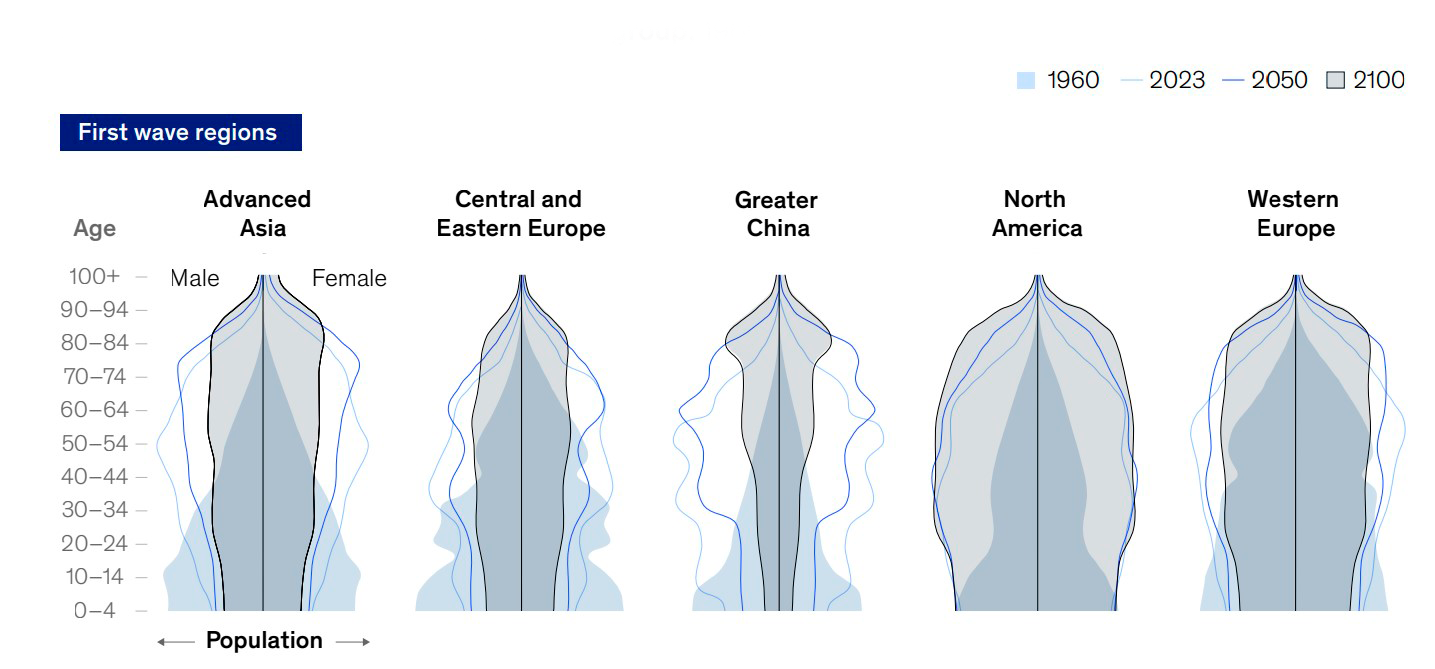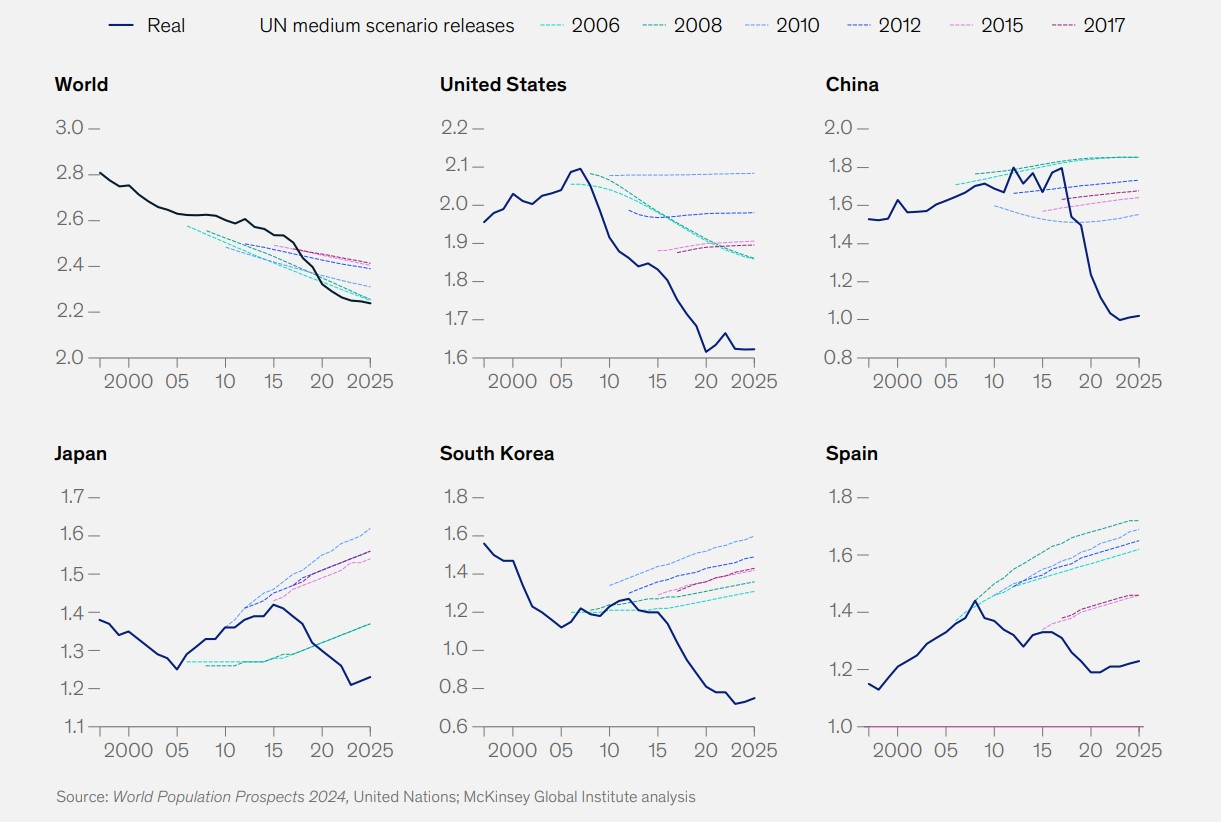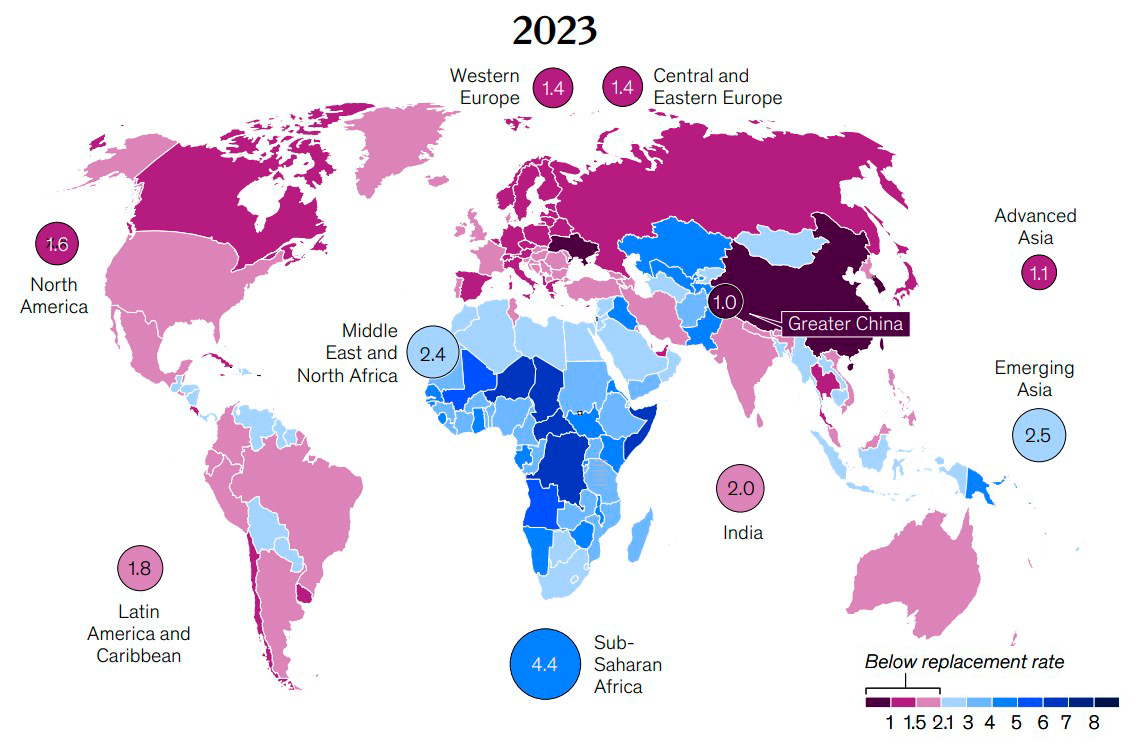We try not to think about complex matters, large-scale shifts that are taking place in the world. After all, we have something to worry about right now and without all these climate changes and demographic collapses. This conclusion is especially relevant for Ukrainians, who are literally forced to worry about survival first and foremost.
Those who have not left Ukraine since the beginning of the full-scale invasion may think that I am greatly exaggerating, because life in the country continues. But the loss of people, air raids, martyrs and missiles, news and forecasts that scare or give hope, and then bring disappointment. All this is not the norm.
This can be confirmed by the birth rate, which fell to some obscene levels during the war. Of course, demographic statistics are currently unavailable, but you don't have to be a demographer to state the obvious fact: the number of babies in the country has significantly decreased.
The world is on the verge of demographic collapse
But Ukraine is one of the few exceptions that has a very specific, tangible reason for depopulation. The rest of the world is also moving in a similar direction, not so rapidly, of course, but firmly and stubbornly.
In the analytical report "Dependence and Depopulation: Counteracting the Consequences of the New Demographic Reality," experts from the McKinsey Global Institute state that two-thirds of the world already lives with a fertility rate below the reproduction level of 2.1 children per woman over a lifetime.
Already this century, the largest economies may well face demographic collapse. This is not surprising, because the world is rapidly aging, and age demographic structures are transforming from classic pyramids into obelisks.

Age structure of the population in different years. Graphics - McKinsey Global Institute
Someone will say, well, that's fine. Young people will have more jobs that are becoming scarcer as technology develops. But this idea is an extremely dangerous mistake. McKinsey analysts note that the reduction in the share of the working-age population and the growth in the number of pensioners, who, fortunately, are living longer, will lead to a significant increase in spending. To feed this army of pensioners, in a quarter of a century it will be necessary to take away up to half of the labor income of working-age citizens in taxes.
In China, for example, the working-age population is expected to decline from the current 67% to 59% by 2050. Another problem is that as older people age, they consume more and more. No, not all of them start traveling more, eating black caviar, and wearing fashionable brands. But all of them, without exception, start actively consuming medical resources that are very expensive in developed countries.
Forecasts are forecasts, but what about reality?
There are several serious counterarguments against all these "scarecrows". First, the inevitable reduction in the working population can be compensated by an increase in labor productivity. Over the past 2 decades, humanity has not been very skillful in this direction. But the AI revolution can radically change the situation. And the work that yesterday an expensive (both in education and in work) specialist performed for 8 working hours, algorithms will do in a few minutes.
The authors of the report do not dispute this thesis. They openly admit that all their calculations are based on current data and do not take into account possible technological changes. Therefore, the 12.5 additional hours for men and 13.6 for women of the same age, which hypothetically will have to be worked every week in 2050 in order for the countries of the first wave of the demographic crisis to maintain their current economic growth rates, are nothing more than an “interesting fact.”
The second counterargument is more difficult to argue with. It is possible that as the number of young people decreases, the birth rate will begin to recover. It will be more actively stimulated at the state level, and scarce resources, such as kindergarten places, will become more abundant. But everything is not so simple. An analysis of previous UN reports with forecasts of demographic trends clearly demonstrates that analysts view the issue much more optimistically than reality ultimately demonstrates. The birth rate in developed countries stubbornly does not want to go up, no matter how much mathematical models promise the opposite.

The graph shows previously predicted UN demographic trends and the actual population curve. Graph - McKinsey Global Institute
Apart from Africa, the vast majority of which is still producing far more than is needed to maintain balance, there are still several countries with emerging economies in the positive zone. Such states are what McKinsey Global Institute analysts call “second-wave countries.” They too will catch up with the global depopulation trend in 1-2 generations. But for now, they can skim the economic cream, monetizing the problems of the “old world.”
Analysts say that the demographic shift will change the current perception of global manufacturing trends. And China, which we are all accustomed to perceiving as a super-factory of everything in the world, will begin to rapidly lose ground. It is expected that by 2050 the share of Chinese workers in the world's work will decrease from the current 26% to 18%. This is a fairly simple logical conclusion: global companies will transfer production to regions where there is no shortage of cheap labor.

Graphics - McKinsey Global Institute
What to do?
The bad news is that it seems impossible to overcome this problem on a global scale. There is a classic closed logical chain here. The further, the more elderly people will live on the planet. Moreover, they will consume more and more resources due to the increase in life expectancy and the cost of medical services. To meet their needs, states will spend more and more of their available resources, inevitably reducing spending on other programs, including those that stimulate fertility.
But individual countries and regions can benefit if they find a way to support the demographic pyramid. I admit, the McKinsey Global Institute analytical report does not contain such conclusions. But everyone can independently consider how Ukraine should behave in the coming decades so as not to miss the chance to become a serious economic player in the world.
There are many conclusions to be drawn. The first and most obvious is that it is necessary to immediately, or better yet yesterday, launch a mandatory funded pension system. Everyone who works and pays taxes today should literally demand that parliamentarians adopt all the necessary decisions for that. In any other scenario, today's workaholics are at least doomed to old age in poverty.
The second, no less obvious, is that the state's post-war efforts should primarily focus on people. It is impossible to stimulate the birth rate solely by increasing payments for the first, second, and third child. In order to give birth, Ukrainians must be sure that they will be able to send their child to a comfortable kindergarten with professional educators, feed and clothe him, cure him when he gets sick, and give him the opportunity to develop his talents: sports, artistic, intellectual, etc.
The third conclusion, which cannot be done without, is that we will have to involve older people in work and return to it those who have become economically inactive. Therefore, it is necessary to prepare tools for involvement, training and retraining for the adult population. Because not every business will be able to win the battle for the scarce youth. And if we realize that youth will be in short supply in the vast majority of countries, and we will compete for our youth not only locally, but also globally, then involving the adult population does not look like a fantastic scenario, but as a logical step, as a necessity.
The fourth conclusion, not very pleasant for many - Ukraine will inevitably have to form a stimulating migration policy. No matter how fast the birth rate increases (and it will not increase instantly anyway), the first children born as a result of stimulating measures will start working in 20-25 years. Therefore, it will be necessary to close the human vacuum with labor migrants. And whether they choose to work in our country depends on the conditions of migration policy. So, if Ukraine strives for development, we should already get used to the idea that people with completely different cultures and, perhaps, races will live and work next to us.
And the fifth conclusion is disappointing for Ukrainians, who are already very fast and work 24/7. We need to continue working on automation, efficiency and productivity. Because, as Alice, the heroine of Lewis Carroll, said: "You have to run as fast as you can just to stay in place, but to get somewhere, you have to run at least twice as fast!"














